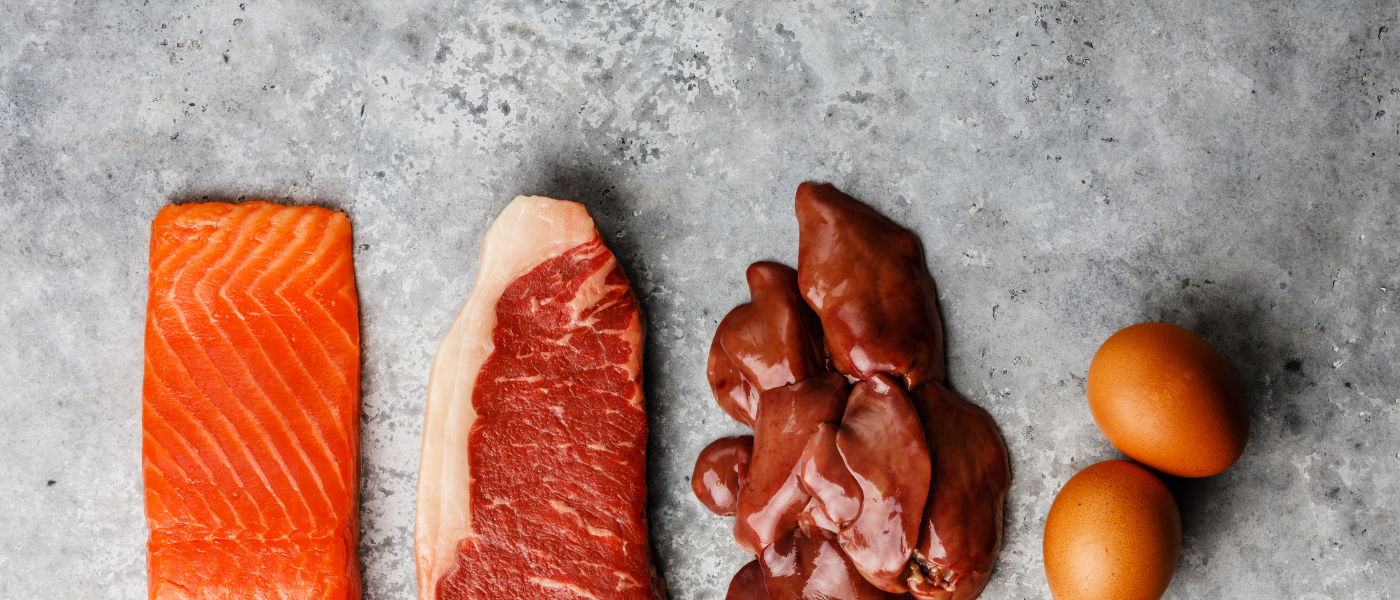How to Improve Fat Digestion and Absorption
Authors:

Dr. Thomas Wnorowski
PhD, CNCC Research Director, BodyBio & Biomedical NutritionistWhile fat has been villainized in the past, fat digestion is actually a very important bodily function. Still, many people suffer from an inability to absorb fat properly. Let’s look a little closer at fat digestion, fat absorption, and symptoms and causes of fat malabsorption.
How the body digests and absorbs fat
Biologically speaking, the purpose of eating is to gain energy, nourishment, and building blocks for the body to continually renew itself. Fats are a great source of energy because, at 9 calories per gram, they have more than twice the energy potential of carbohydrates, and they do not cause cardiac events. But they do more than just supply energy.
Fats are the building blocks of phospholipids, key components of cell membranes. Fats store energy, and their components serve as intracellular messengers and help to manufacture hormones. Most of the fat we eat is in the form of triglycerides, which are large molecules. The body uses lipase enzymes to break them down into smaller particles. Most lipid digestion in an adult occurs in the upper loop of the small intestine, where a pancreatic lipase does the work. Fats may differ from each other by virtue of carrying different fatty acids, which may be saturated or unsaturated.
When we eat fat, stomach emptying slows and a small amount of fat is treated by gastric lipase in the stomach. This holds especially true for saturated fats, like those in butter.
The liver produces bile, stored in the gallbladder, ready to be shot into the small intestine when the fat gets there. Bile emulsifies the fat and introduces it to pancreatic lipase, whose job is to digest the triglycerides into free fatty acids and monoglycerides, which are then absorbed into the small intestine under typical circumstances.
Fat malabsorption symptoms
At the most basic level, fat malabsorption is a decreased ability for the intestines to absorb needed fats.
The signs and symptoms that someone who is lacking sufficient enzymes to digest and absorb fats may include:
- bloating
- gas
- feelings of fullness
- stomach cramps
- diarrhea
- pale-colored stool
- floating stool
- erratic bowel movements
Failure to absorb fats will likely engender additional symptoms, including:
- dry hair and skin
- premature skin aging
- weak nails
- sore joints
Where fatty acids are concerned, it also affects:
- moodiness
- anxiety
- depression
- impaired cognitions
- allergic or atopic conditions - eczema, asthma, hay fever
- sleep problems
You may also see low levels of cholesterol, triglycerides, HDL, and LDL in your blood test results.
Fat malabsorption causes
Not all people make sufficient enzymes to handle dietary fats. Not all people have the bile levels, either stored in the gallbladder or injected directly by the liver for those without a gallbladder, to digest dietary fats.
Liver and gallbladder problems
When the flow of bile is sluggish or slow, the gut shifts to a state of dysbiosis, where unfriendly flora dominate over friendly/beneficial flora. Constipation is often a telltale sign of a sluggish liver and that your gut is in a state of dysbiosis. When this occurs, detoxification in the liver gets thwarted by the toxins made from pathogenic bacteria. With the resulting imbalance of flora and dysbiosis, gas and bloating can occur after eating.
Your liver is integral to breaking down fats, carbs and protein during digestion. When the liver becomes overtaxed -- whether through poor diet and lifestyle choices, metabolic imbalances, stress response, and genetic sensitivities -- the liver may become incapable over time of altering fat into forms ready for elimination.
Perhaps you’ve had your gallbladder removed. Without a gallbladder, bile trickles into the intestines slowly, not being of enough volume to handle a fat-laden meal. Fatty acids absorption will be impeded and uptake of vitamins A, D, E and K will be limited. And the fat-soluble nutrients, such as lycopene, lutein and other phytochemicals will remain unused.
In the absence of bile, food can still be digested, but the process is more efficient with it. Those who can’t pull nutrients from their foods often suffer constipation and minor bowel problems arising from incomplete digestion. And a shortage of bile can lead to wide swings in cholesterol and precipitate gallstones.
Food intolerances, sensitivities & lack of stomach acid
Food intolerances and food sensitivities, such as lactose intolerance or celiac disease, mean the digestive system cannot completely break food down into smaller components. This prohibits absorption of fat and other nutrients.
When you don’t have enough stomach acid, you may not be digesting your food properly. If food goes undigested, it could lead to malabsorption of fat because we will lack the enzymes needed to break down the food and help absorb nutrients.
Extended use of antibiotics
People who have been on antibiotics for a prolonged period may find it leads to malabsorption. Any specific regimen your health care provider has prescribed must be followed as recommended, of course. Speak to your doctor or integrative health care provider about your options if you worry about taking antibiotics for an unnecessary or prolonged period.
How to increase bile production to improve fat digestion
With specific dietary and lifestyle modifications, it may be possible for many people to improve fat digestion. Following is more about how to increase bile production and improve fat digestion overall.
Eat Foods that Support the Liver
Eating a balanced, fiber-rich diet can help aid fat digestion. Fruits, vegetables and high quality protein generally help support liver function. Burdock root, cardamom, celery, cilantro, cinnamon bark, cruciferous vegetables (such as bok choy, broccoli, Brussels sprouts, cabbage, cauliflower, garden cress, and kale), dandelion, eggs, garlic, ginger, green tea, licorice root, onions, parsley, sarsaparilla and other herbs will all help to regulate liver functioning. Drinking plenty of mineral rich, filtered water also helps the liver process and sort nutrients from waste.
For healthy liver function, it’s generally recommended to avoid fructose, oxidized fats, iodized salt, raw or undercooked shellfish (like oysters and clams), and alcohol.
Reduce Stress
Chronic stress can affect digestion, including how the body absorbs nutrients, and which nutrients the intestines absorb. Meals should always be consumed while in a parasympathetic state in order to optimize digestion. Eating at a table, breathing deeply, taking small bites, chewing thoroughly, avoiding large quantities of water, and eating in community all help to optimize digestion by promoting being in a parasympathetic state. By developing healthy coping mechanisms for stress, the body will lower production of hormones such as cortisol that can interfere with fat absorption and actually lead to fat accumulation in the body.
Try Time Restricted Eating
Even a few hours of fasting (including a few hours between meals) may improve digestion. Time restricted eating has been the subject of some promising research in recent years. By avoiding snacking or eating, especially at nighttime, you can optimize digestion, support detoxification, and may be able to digest more fat between meals.
Use supplements to support bile production
Supplements can support healthy bile production, which aids in fat digestion as outlined below.*
TUDCA
TUDCA, tauroursodeoxycholic acid, is a secondary bile acid that can support digestion*. The liver is a hardy organ, but it still may succumb to abuse. TUDCA supports healthy liver enzyme levels and supports the healthy flow of bile from the liver.* TUDCA helps reduce stress at the cellular level, in the endoplasmic reticulum and Golgi body (organelles in charge of folding proteins). Distortions of these are implicated in neurological and neuromuscular disorders. TUDCA can also help protect kidneys against inflammation from high sodium intake, and help protect memory from plaque buildup in the brain.
Long ago, in Traditional Chinese Medicine, bear bile was harvested to acquire TUDCA from animals. Now, TUDCA can be synthesized through the fermentation of certain bacterial strains.
Ox Bile
A valued partner to TUDCA in direct lipid digestion is ox bile, an aid in processing fats and fat-soluble vitamins.* Ox bile is remarkably similar to human bile, which explains its effectiveness. Containing water, salts, cholesterol and lecithin, this product contributes to feelings of satiety while increasing the assimilation of complex nutrients and minerals.
Supplemental ox bile is taken from the animal and sterilized using heat, taking care not to upset the product’s integrity. Afterward, it’s dehydrated and crushed, and then made into a tablet or capsule.
Even without a gallbladder, eating good fats is necessary to avoid these complications. The liver normally makes between 400 and 800 milliliters of bile every day, much of it recycled. Each bile salt molecule may experience as many as twenty recycles before being excreted. Some may be recycled as many as three times in a digestive phase. Bile supplements are deemed safe, though not always necessary for individuals with sound digestive health.
Leonardo Baiocchi, Giuseppe Tisone, Mario Antonio Russo, Chiara Longhi, Gianpiero Palmieri, et al. TUDCA prevents cholestasis and canalicular damage induced by ischemia-reperfusion injury in the rat, modulating PKCalpha-ezrin pathway. Transpl Int. 2008 Aug;21(8):792-800.
Mike Boland. Human digestion--a processing perspective. J Sci Food Agric. 2016 May;96(7):2275-83.
Carmen De Miguel, Randee Sedaka, Malgorzata Kasztan, Jeremie M Lever, Michelle Sonnenberger, et al. Tauroursodeoxycholic acid (TUDCA) abolishes chronic high salt-induced renal injury and inflammation. Acta Physiol (Oxf). 2019 May;226(1):e13227.
V Hartenstein, P Martinez. Structure, development and evolution of the digestive system. Cell Tissue Res. 2019 Sep;377(3):289-292.
Alan F Hofmann. Cholestatic liver disease: pathophysiology and therapeutic options. Liver. 2002;22 Suppl 2:14-9.
Sha Li, Hor Yue Tan, Ning Wang, Ming Hong, Lei Li, Fan Cheung, and Yibin Feng. Substitutes for Bear Bile for the Treatment of Liver Diseases: Research Progress and Future Perspective. New Exploration of Chinese Herbal Medicines in Hepatology; Volume 2016 |Article ID 4305074
Ana F Nunes, Joana D Amaral, Adrian C Lo, Maria B Fonseca, Ricardo J S Viana, Zsuzsanna Callaerts-Vegh, Rudi D'Hooge, Cecília M P Rodrigues. TUDCA, a bile acid, attenuates amyloid precursor protein processing and amyloid-β deposition in APP/PS1 mice. Mol Neurobiol. 2012 Jun;45(3):440-54.
Xiao-Li Pan, Li Zhao, Liang Li, Ai-Hua Li, Jin Ye, Ling Yang, Ke-Shu Xu, Xiao-Hua Hou. Efficacy and safety of tauroursodeoxycholic acid in the treatment of liver cirrhosis: a double-blind randomized controlled trial. J Huazhong Univ Sci Technolog Med Sci. 2013 Apr;33(2):189-194.
K Schulze. Imaging and modelling of digestion in the stomach and the duodenum. Neurogastroenterol Motil. 2006 Mar;18(3):172-83.
Tang W, Yi C, Kalitsky J, et al. Endotoxin downregulates hepatic expression of P-glycoprotein and MRP2 in 2-acetylaminofluorene-treated rats. Mol Cell Biol Res Commun. 2000 Aug;4(2):90-7.

